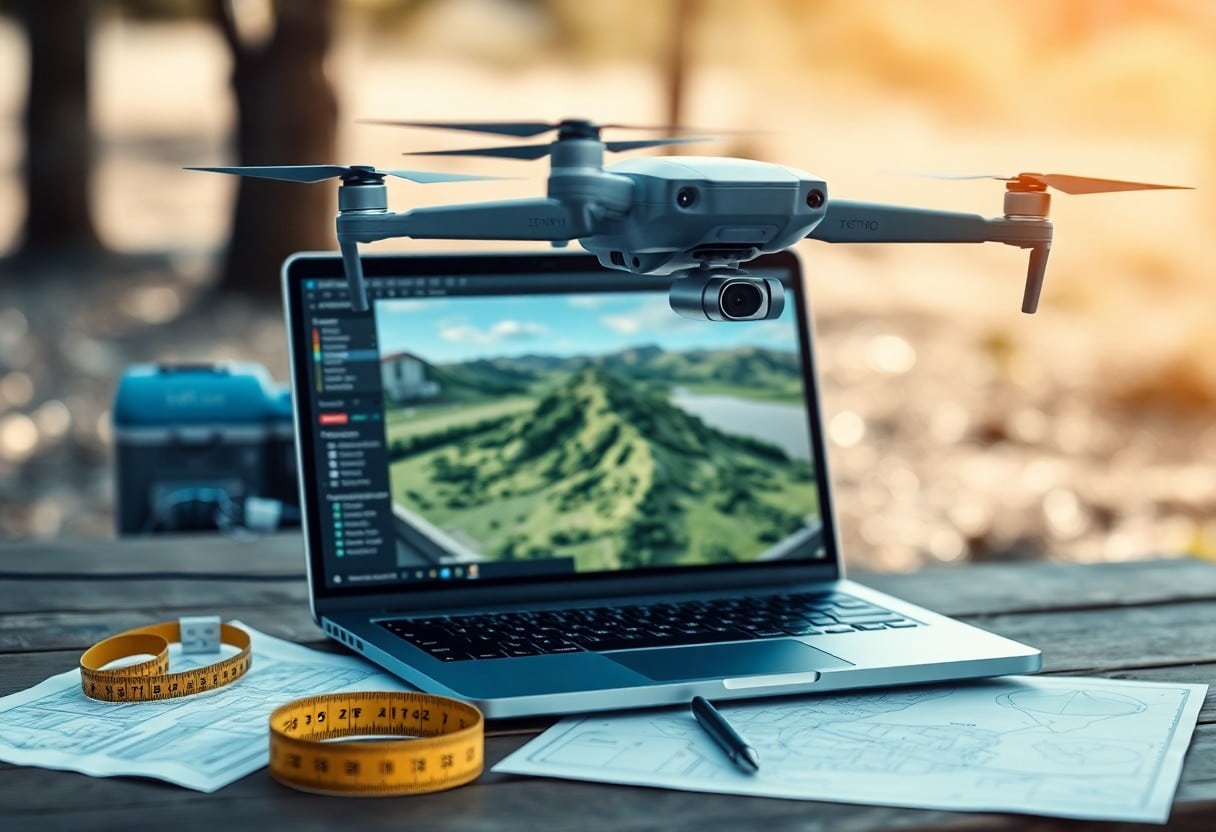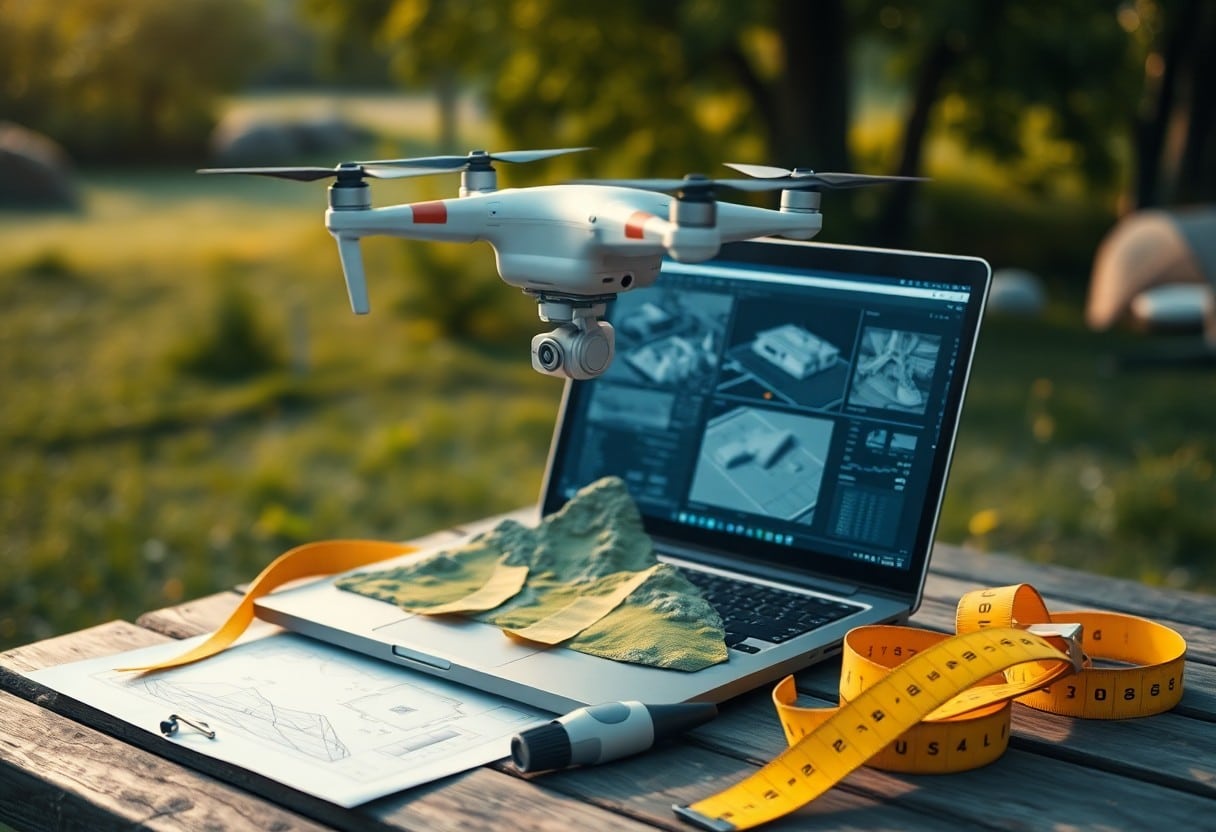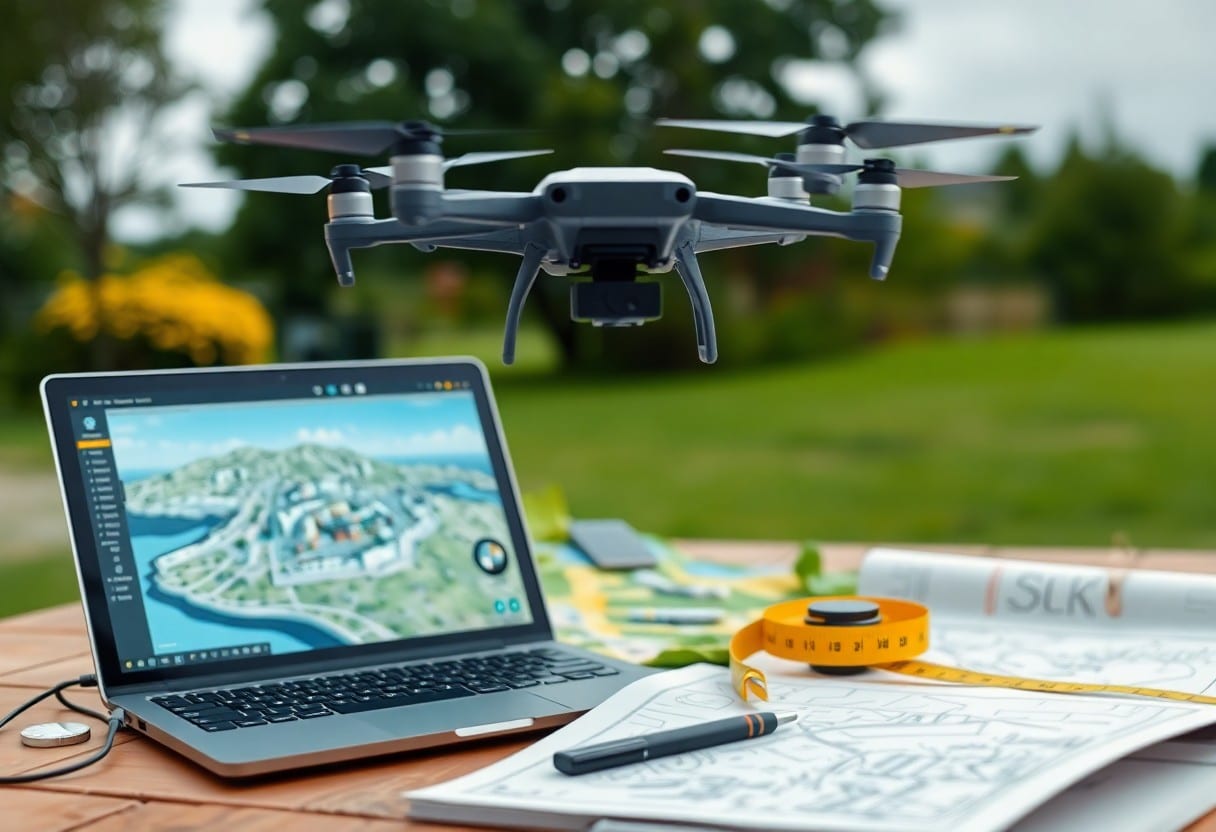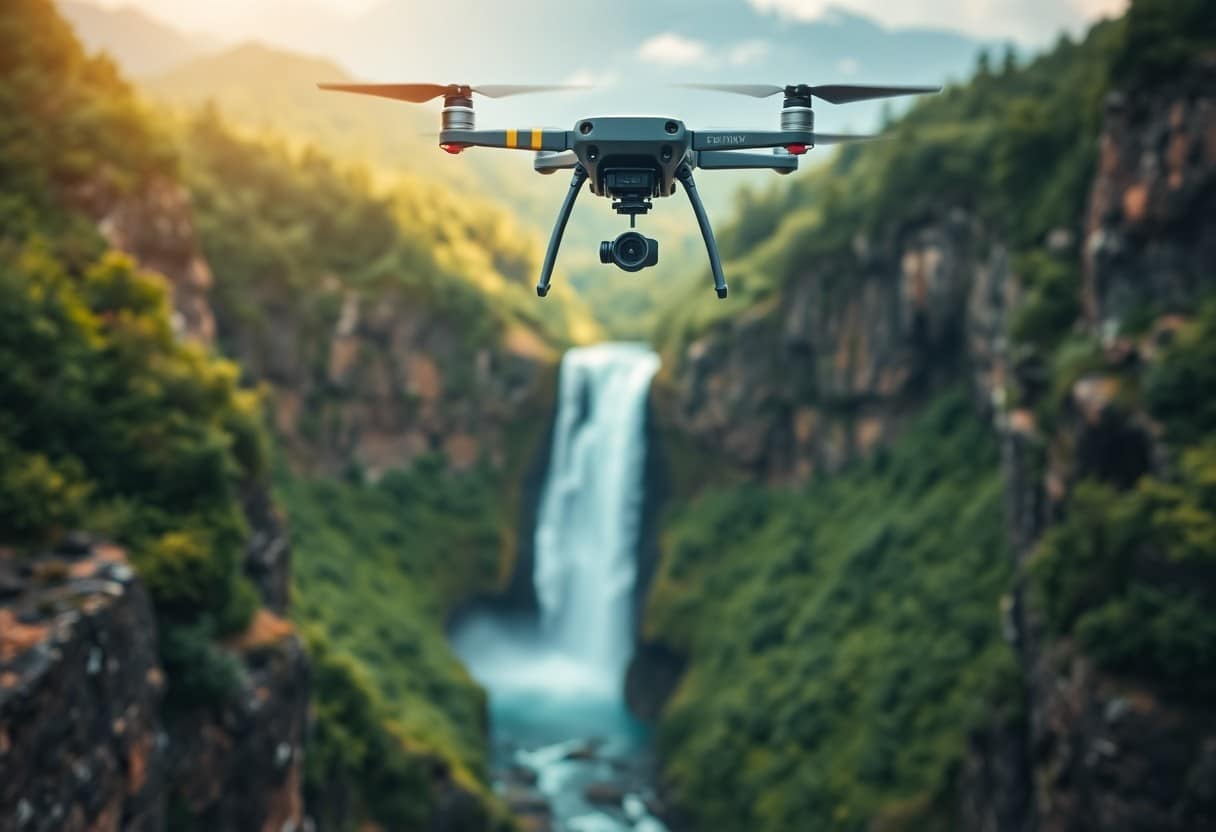Beginner's Guide - 5 Steps to Successful Drone 3D Modeling
In this guide, you will findSuccessful Drone 3D ModelingThe five key steps required. Whether you're a beginner or a hobbyist interested in this technology, these steps will help you gain a deeper understanding and mastery of the tips and tricks of drone modeling. In this rapidly evolving field, it is important to understandSafety and Best PracticesIt is vital to make sure that your model is bothaestheticsboth... and...PracticalLet's go! Let's start this wonderful journey!

Key Points:
- Understanding Equipment: Recognize your drone model and its capabilities to ensure it is suitable for 3D modeling needs.
- Choosing the right location: Choose a clear, controlled environment to photograph in order to get the best modeling results.
- Setting up a shooting schedule: Plan the path and angle of the shot every step of the way to ensure that all necessary viewing angles are covered.
- Data Processing: Use the right software to process the photos after shooting to generate high-quality 3D models.
- Check the quality of the model: Evaluate the generated 3D model and correct any errors or defects to improve the final result.
- Practice and Improvement: Improve your skills through more hands-on practice and keep learning new methods and best practices.
- Compliance with the law: Ensure that all filming activities comply with local laws and drone usage guidelines.
Understanding Drone 3D Modeling
Drone 3D modeling is a process of creating highly accurate three-dimensional models through drone technology. This type of modeling takes advantage of a drone's data collection capabilities, allowing you to capture detailed topographical, architectural, or other environmental features. With advances in automation technology, 3D modeling by drone has become an indispensable tool in fields such as engineering, construction and land surveying.
Types of Drone 3D Modeling
- Structural Modeling - For modeling buildings and infrastructure.
- terrain modeling - Capture the height and features of the terrain.
- Asset Management - Data used to manage and evaluate assets.
- Archaeology - Record and protect historic sites.
- Agricultural Applications - For precision agriculture and land management.
These modeling types demonstrate the flexibility and applicability of drones in various industries.
| Modeling Type | Applications |
| Structural Modeling | Construction, Infrastructure |
| terrain modeling | Land Surveying, Environmental Analysis |
| Asset Management | Asset monitoring and management |
| Archaeology | Historic Site Records |
| Agricultural Applications | Crop management, analysis |
Factors to consider before you start
Before you start drone 3D modeling, there are several important factors to consider that will affect your final modeling results and overall experience. Understanding local laws and regulations, equipment selection, required software tools, and your technical capabilities are all things you need to be aware of before you begin.
- Laws and Regulations - Learn about local drone laws.
- Equipment Selection - Suitable drones and accessories.
- Software Tools - Necessary modeling software recommendations.
- Technical Capabilities - Skills and training required.
- Budget Considerations - Funding requirements for the project.
whicheverRelated Technical IssuesmaybeLegal disputesAll may affect the smooth progress of modeling.
It is important to consider the pre-modeling factors, and you need to evaluate each one carefully to avoid future difficulties. First and foremost, it's always important to recognize your region'sAviation SpecificationsIn addition, the use of UAVs may result in significant penalties for non-compliance. In addition, choosing the rightDrone Equipmentrespond in singingAppropriate Softwarealso has a direct impact on the quality of your modeling. YourSkills and experienceIt will affect the efficiency and results of your modeling.
- Aviation Specifications - The laws and regulations that must be followed.
- Drone Equipment - The right model for your needs.
- Modeling Software - Applications and tools needed.
- Personal Skills - Ability to influence modeling results.
- Funding Requirements - Ensure adequate capital investment.
Any inadequate preparation may lead to unexpected challenges in the modeling process.

Step-by-Step Guide: 3D Modeling for Drones
Drone 3D modeling is a step-by-step process, and with the proper preparation and planning approach, you can achieve the results you want. Here are some basic steps to help you get started:Preparation and Planning,Capturing data using drones,Data Processing and Modeling,Inspection and Verificationas well asResults ShowcaseYou may refer to more information by visiting You can find more information at10 Steps to Mastering the Rules for Commercial Use of DronesThe
| Steps | Introduction |
| 1. Preparation and planning | Ensure you have a clear plan of where you want to shoot and what you want to shoot. |
| 2. use of drones to capture data | A drone is utilized to collect the necessary data for photography. |
| 3. Data processing and modeling | Use professional software to convert data into 3D models. |
| 4. Inspection and verification | Confirm the accuracy of the model to ensure no errors. |
| 5. Results presentations | Present your results in an appropriate manner. |
Preparation and Planning
Before starting the 3D modeling of the drone, theYou need to prepare and plan wellThis includes identifying the location, understanding the weather conditions and selecting the right drone model. This includes identifying the location, understanding the weather conditions and choosing the right drone model. During this process, theEarly planningwill help avoid unexpected challenges and provide a good foundation for your program.
Capturing data using drones
Capturing data is the most critical step in 3D modeling of a drone. You need to set the flight parameters of the drone and make sure it can efficiently capture the desired images. Use the right software to plan the flight path and shot intervals, which will make your shots more effective. When capturing data, theMaintaining drone stability and flight safety is a must.This is the only way to get a high quality image.
When you're ready to capture data with your drone, it's important to double-check your equipment to make sure it's working properly. Depending on the terrain, you may need to adjust the altitude and speed of the drone to get the best results. At the same time, careful consideration should be given to the image overlap setting, which is important for subsequent 3D modeling.Too wide or too small a range may affect the final result.Therefore, please make adjustments according to the requirements of the project and proceed with caution.

Tips for Successful Drone 3D Modeling
To make sure your drone3D modelingTo be successful, you can refer to the following tips:
- preserveStability of the shotAvoid vibration.
- Ensureadequate lightingto get a clear image.
- Follow goodAerial pathThis covers all the necessary areas.
- CheckData CoverageThe following is a summary of the information provided by the Government of the Hong Kong Special Administrative Region of the People's Republic of China
- utilizationHigh Resolution CameraIn addition, the quality of the final product will be improved.
Recognizing that the use ofWhat aerial composition tips make your drone photography stand out?Tips to help you achieve more success.
Data Collection Best Practices
In the process of conducting droneData CollectionYou should maintain a consistent shooting height and ensure that you capture the same subject from multiple angles. In addition, you need to take into account external environmental factors such asWeatherand terrain to avoid compromising the quality of the final data. Maintaining a good program will help improve the overall results.
Software Selection and Use
Choose the right oneSoftwareIt is important for your drone 3D modeling. You should consider options with user-friendly interfaces, smooth learning curves, and full functionality. Please update regularly when usingreleasesThe program is designed to ensure that it has the latest features and fixes bugs.
In terms of software selection, you should evaluate differentModeling ToolsFor example, Photoshop, Agisoft Metashape or Pix4D. Choosing a tool that suits your needs will not only increase your modeling efficiency, but also bring your work to a higher professional standard. Please note when emphasizing the use ofSystem RequirementsTo ensure that your device can run the selected software smoothly.
Advantages and Disadvantages of Drone 3D Modeling
The process of 3D modeling by a drone has its pros and cons. The table below will help you understand these factors and make an informed decision.
| Advantages | Disadvantages |
|---|---|
| Rapid data collection | Affected by weather |
| High Precision Measurement | Professional software required |
| Can be operated in hazardous areas | Legal Restrictions |
| Reduced labor costs | High technical threshold |
| Can be used in a wide range of industries | Regular maintenance of the drone is required |
For a more in-depth look at this area, you may want to check outStep by Step - The 6 Best Techniques for Drone 3D ModelingThe
Advantages of using drones
The main advantage of using a drone is itshigh efficiencyrespond in singingFlexibility. Whether in construction, agriculture, or environmental monitoring, you can quickly collect large amounts of data and generate 3D models in a short period of time, which makes your work much more efficient.
Potential Limitations and Challenges
Although photogrammetry for drone 3D modeling is quite promising, itsPotential ChallengesThis should not be overlooked. For example, weather conditions may cause difficulties in data collection. In addition, there are certain restrictions on the use of drones under the law, which makes it necessary for drones to be operated with particular caution.
When further discussing potential limitations and challenges, you need to be aware of the regulations as well as the safety of drone operations.Improper use may cause safety problemsThis is especially true in areas with large populations. In addition, the different functions of the drone and the difficulty of its operation may confuse beginners, so it is important to choose the right equipment and software. Most importantly, you must perform regular maintenance on your drone.Maintenance and UpgradesThis is to ensure its performance and safety.
Beginner's Guide - Five Steps to Successful Drone 3D Modeling
By following these five steps, you will be able to effectively master the basics of drone 3D modeling. First, make sure you have a good understanding of the software and hardware you need; next, take high-quality aerial photographs, and then use the appropriate software for modeling and editing. After modeling, don't forget to make the necessary tests and adjustments to get the best results. Finally, continuous learning and practice is the key to improving your skills. By following these steps, you will be able to succeed in the field of drone modeling.
Frequently Asked Questions
Q: What is "Beginner's Guide - 5 Steps to Successful Drone 3D Modeling"?
A: This is a guide designed for drone beginners, covering the five main steps on how to effectively use a drone for 3D modeling. The guide provides technical knowledge and practical advice to help users get started quickly and achieve successful modeling results.
Q: What level of study is this guide for?
A: This guide is especially suitable for beginners, enthusiasts and professionals who want to improve their skills in drone modeling. Whether you are new to drone modeling or want to learn more about 3D modeling techniques, this guide is perfect for you.
Q: What kind of equipment and software is needed for 3D modeling?
A: 3D modeling usually requires a drone (a model with a high resolution camera is recommended), a computer, and professional modeling software such as Agisoft Metashape or Pix4D. In addition, make sure your drone has a good GPS positioning system to improve modeling accuracy.
Q: How to ensure the quality of the pictures taken by the drone?
A: To ensure picture quality, it is recommended that you take pictures under good lighting conditions and use a smaller shutter speed to obtain sharper images. In addition, please adjust camera settings such as ISO value and aperture size to get the best results in different environments.
Q: What are some common challenges in the modeling process?
A: During the modeling process, you may encounter problems such as insufficient image overlap, incorrect camera angles, and excessive environmental noise. These challenges may affect the quality of your modeling, so plan your route carefully and make sure you have enough overlapping images before shooting.
Q: How should I handle and use the 3D model after I finish 3D modeling?
A: After completing the 3D modeling, you can use the generated model in various software for further editing and analysis, such as for visual presentation, virtual reality application or for engineering design. Make sure to select the appropriate format for export according to your needs.
Q: Where can I find more resources to learn Drone 3D Modeling?
A: You can search for tutorial videos on the web, take online courses or seminars, and refer to professional communities on forums and social media. In addition, there are many books on drone and 3D modeling available in professional bookstores and digital libraries.




